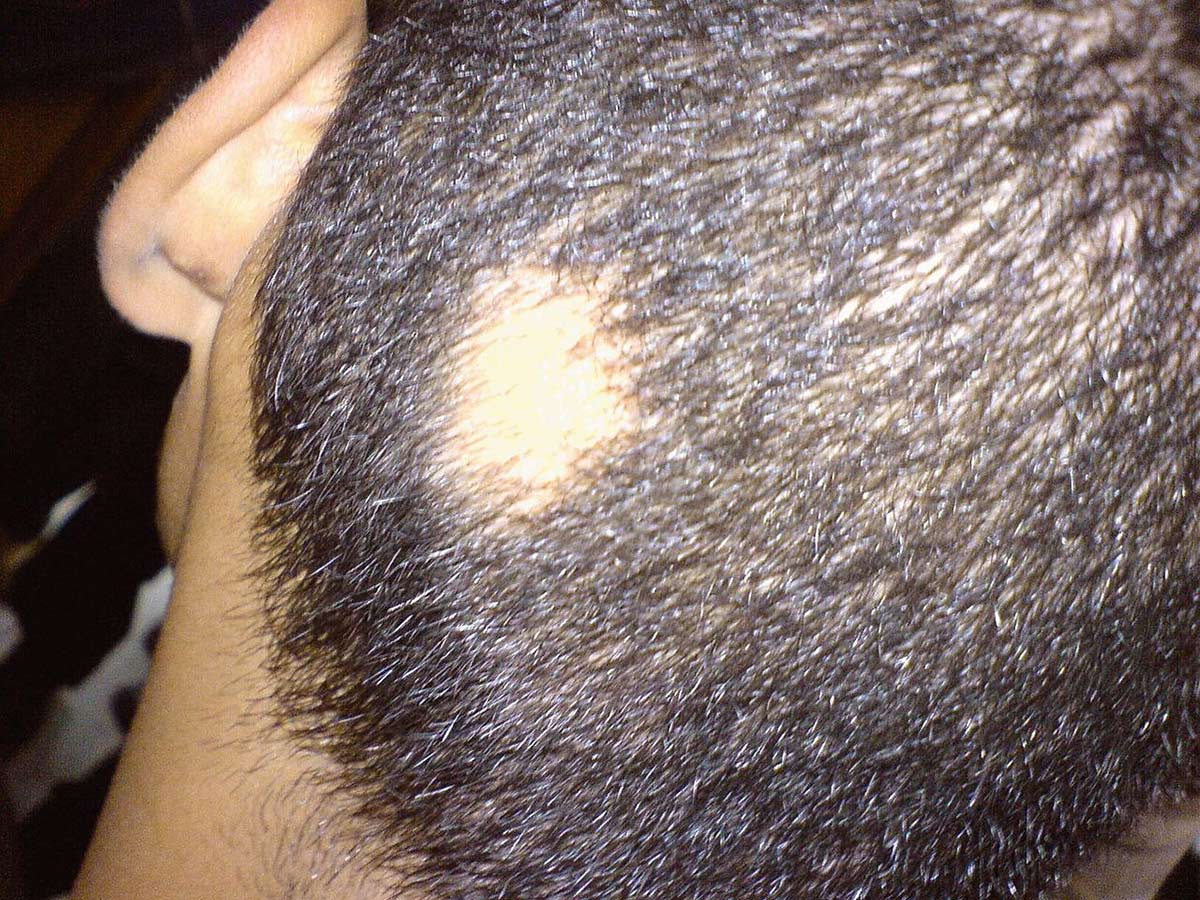Hair loss affects over three quarters of men and nearly half of women, typically over the age of 40. Until recently there were few effective treatments, and beyond acknowledging the existence of male pattern baldness, there is little popular recognition of how widespread a phenomenon hair loss really is.
For many people, their hair is a major part of their identity and to lose it is emotionally painful. For others, it can be a sign of some underlying issue requiring more serious attention.
In this post, the first of a three-part series, we will focus on the causes of hair loss, from infections, through stress, to anorexia. Later posts will examine treatments and products that can help sufferers.
Overview: what is hair loss?
Hair loss is not the same as hair falling out of your head. Hair shedding, as it is technically known, is an ongoing process usually resulting in the loss of between 50 and 100 hairs a day. Unless you have distinctive hair which is brightly colored or unusually long, you are unlikely to notice this process. Hair loss, by contrast, is really follicle loss. Hair stops growing. Sometimes the follicles responsible can be persuaded to start back up again, but some hair loss is permanent.
Follicles have a natural sequential cycle of activity, in which they move between anagen (active growth), telogen (resting), catagen (cell division in the long part of the follicle ceases), exogen (active shedding), and kenogen (phase before growth of new hair begins).
Types of hair loss

Hair loss varies and the same person may experience more than one type of loss. Common types of hair loss include:
Gradual thinning
An area of scalp experiences gradual thinning as the number of active follicles falls. Sometimes the actual hairs themselves become thinner. However, since this is often accompanied by the transition from pigmented to white or gray hair and the accompanying change to a thicker hair shaft, there can be a paradoxical effect: fewer, thicker hairs make you look as if your hair is even thinner. Gradual thinning is a slow process, typical of hormonal imbalances and male pattern baldness in later life. In women, it more usually manifests as a broadening of the part in their hair.
Sudden loss
Sudden hair loss can be caused by stress, including sudden physical or emotional changes; by deficiencies of some nutrients, such as iron and vitamin A; and by weight loss and some types of illness, including bowel and thyroid conditions that can be dangerous if left untreated. Types of stressors that can trigger sudden hair loss can include giving birth, getting divorced or losing a job, or recovering from an illness. These stressors can trigger hair follicles to move to the resting phase of their lifecycle in greater numbers than usual, so hair is not actively shed but can easily be pulled out at up to three times the usual rate and regrowth is slowed.
Patients who have experienced sudden hair loss should have their general health checked by an MD to rule out anything more serious.
Patchy loss
Sometimes, hair is lost in patches. This can be accompanied by itching and pain in the area where the hair is lost. It can be triggered by autoimmune or other skin conditions; by infections, such as ringworm; and by alopecia areata (see below).
What causes hair loss?

Hair loss can be caused by several factors, including:
Poor blood flow
Poor blood flow to follicles is increasingly a suspect in male pattern baldness, and studies in mice have found greater blood flow associated with up to 70% more hair volume. Poor general circulation can contribute to hair loss, as can a genetic predisposition to lower circulating blood volume in the scalp or other affected area. Treatments to improve blood flow can help with hair retention and regrowth.
Hormonal effects (during pregnancy)
During pregnancy and childbirth, hormones spike, with estrogen reaching up to 7,000 pg/mL in the second trimester (compared with normal levels peaking around 400 pg/mL). Other hormones also skyrocket, creating complex effects. For many women, hair growth and quality improves as estrogen levels rise, but after childbirth there can be a rebound effect — one felt during pregnancy by a small number of people, known as telogen effluvium, similar to the stress-induced hair loss discussed above. It’s due to androgens, suppressed by estrogen during pregnancy, rebounding to higher-than-previous levels when estrogen levels fall.
Hormonal effects (DHT)
Dihydrotestosterone (DHT) is a product of testosterone, and about 10% of an adult’s circulating testosterone will be converted to DHT. It’s the main hormone involved in characteristic male pattern baldness, so individuals with higher testosterone levels or greater DHT sensitivity are more likely to experience this type of hair loss. Minoxidil and finasteride are used to block absorption of DHT and can be used to treat male pattern (androgenic) baldness. This type of baldness can occur in women but finasteride is contraindicated by the risk of fetal disorders.
Infections
Infections such as ringworm can cause patchy hair loss accompanied by itching. A fungal infection best known for causing athlete’s foot, ringworm causes brittleness of the hair within the follicle, making it break off below the skin and leaving smooth, round patches on the scalp and elsewhere. While these are distressing for many patients beyond their symptoms, they are also easy to treat with topical antifungals.
Other infections that can cause hair loss include trichomycosis nodularis, Staphylococcus aureus and Pseudomonas aeruginosa. All can be treated with topical medications.
Physical causes (traction and friction alopecia)
Sometimes, hair loss has a direct, physical cause: patients are effectively pulling the hair out of their own heads, usually without meaning to. Traction and friction alopecia result in patchy hair loss that mimics the effects of alopecia areata, but is actually caused by physical damage to hair follicles. Initial symptoms include broken hairs and irritated follicles at the hairline. However, traction and friction alopecia are not simply breaking existing hairs off: they are irritating and damaging the follicles themselves. Over time, these follicles can shut down, resulting in more permanent hair loss.
Traction and friction alopecia are often reversible, and treatment usually starts with addressing the behaviors that are irritating the scalp. These are usually hairstyle or headgear related, such as very tight ponytails or wearing wigs or hats too frequently or tightly.
Alopecia areata
Alopecia areata is an autoimmune disease which attacks hair follicles, leading to hair loss which can be temporary or permanent. Affecting up to 2% of the population, alopecia is sometimes accompanied by sudden graying of the hair and in up to 20% of sufferers by changes to the fingernails. Diagnosis is usually by observation, sometimes including trichoscopy, and treatment by topical steroids and immunotherapy. In up to 80% of patients with relatively minor alopecia, hair growth recovers spontaneously in about a year.

A typical symptom of alopecia, a coin-sized, roughly circular patch where hair has ceased growing. (Source)
Medical treatments (such as chemo)
Chemotherapy can cause hair loss all over the body, not just the scalp. It usually begins falling out two to four weeks after treatment begins, and includes even the hairs on the inside of the nose. Patients are usually familiar with the loss of head hair from popular culture, but may be surprised to lose their eyebrows, so it can be good to try to prepare them where possible.
Other medical treatments that cause hair loss include retinoid-based anti-acne drugs, birth control, anti-clotting agents, and some drugs to lower cholesterol. Sometimes finasteride and minoxidil can be used to reduce the effects, and ice packs on the scalp immediately after chemotherapy can reduce blood flow to the scalp. While reduced blood flow to the scalp is usually undesirable, for patients undergoing chemotherapy it means reducing the amount of chemotherapy drugs reaching the hair follicles.
Is hair loss inherited?
Hair loss is strongly inherited, though the exact process isn’t well understood. Heredity is the strongest indicator of whether you’ll get characteristic, age-related gendered hair loss. If you’re a man, your own father’s hair is the best indicator of what you have to look forward to, both in terms of loss pattern and in terms of the age it begins to affect you. Take a look at your mother’s father, too: some of the genes that cause male-pattern baldness are inherited on the X chromosome. If you’re a woman, your mother’s hair loss pattern is likely to be a good model for yours.
Can hair grow back?
This is likely to be patients’ biggest, most urgent question, and the answer is one few will like: it depends.
Hair follicles that have stopped producing new hairs within the last handful of years often respond well to finasteride and minoxidil, though it can take months to years to see the full effects. Most patients with alopecia areata recover on their own, though the less severe the symptoms the more likely spontaneous recovery is. People undergoing chemo typically regrow their hair when their course of chemotherapy ends.
Effects from pregnancy and childbirth can be more complex, since a wide range of factors including hormonal triggers, rebound effects, and emotional and life circumstances. Some patients will face permanent effects, though for most people, recovery is spontaneous and full within about a year.
What treatments are available?
This is the first of a three-part series, focusing on typical forms of hair loss and causes, with treatments only mentioned in passing. In the next two installments, we will go into more detail on tried-and-tested treatments for a range of hair loss issues in both men and women, as well as revolutionary new tools like platelet-rich plasma injections. Keep an eye out or sign up to make sure you don’t miss out!













